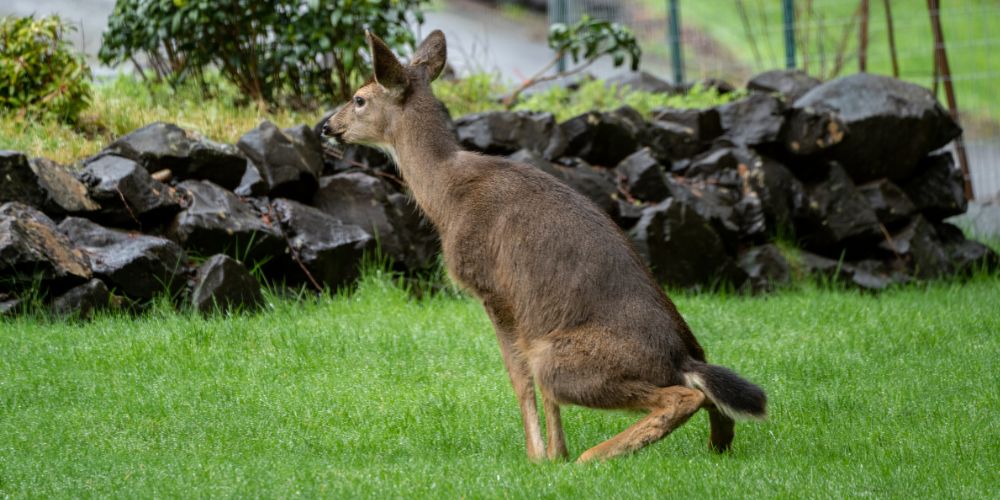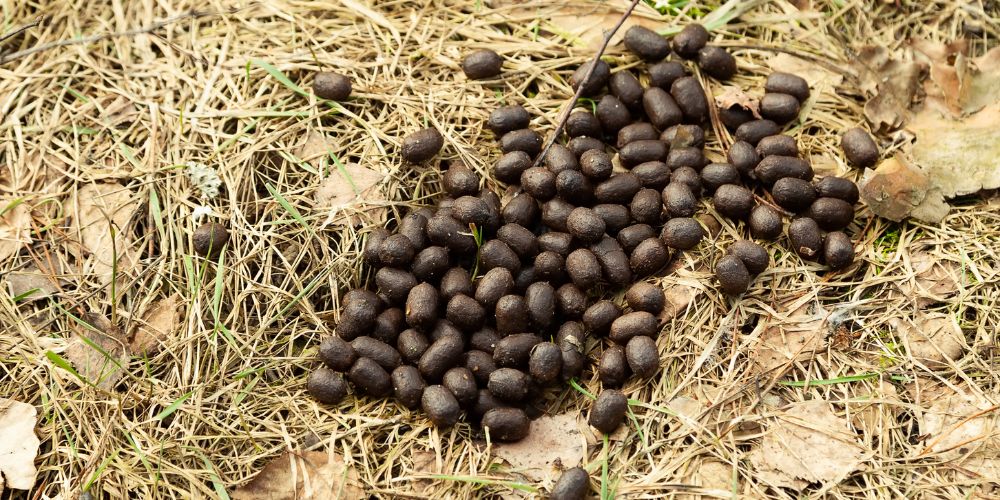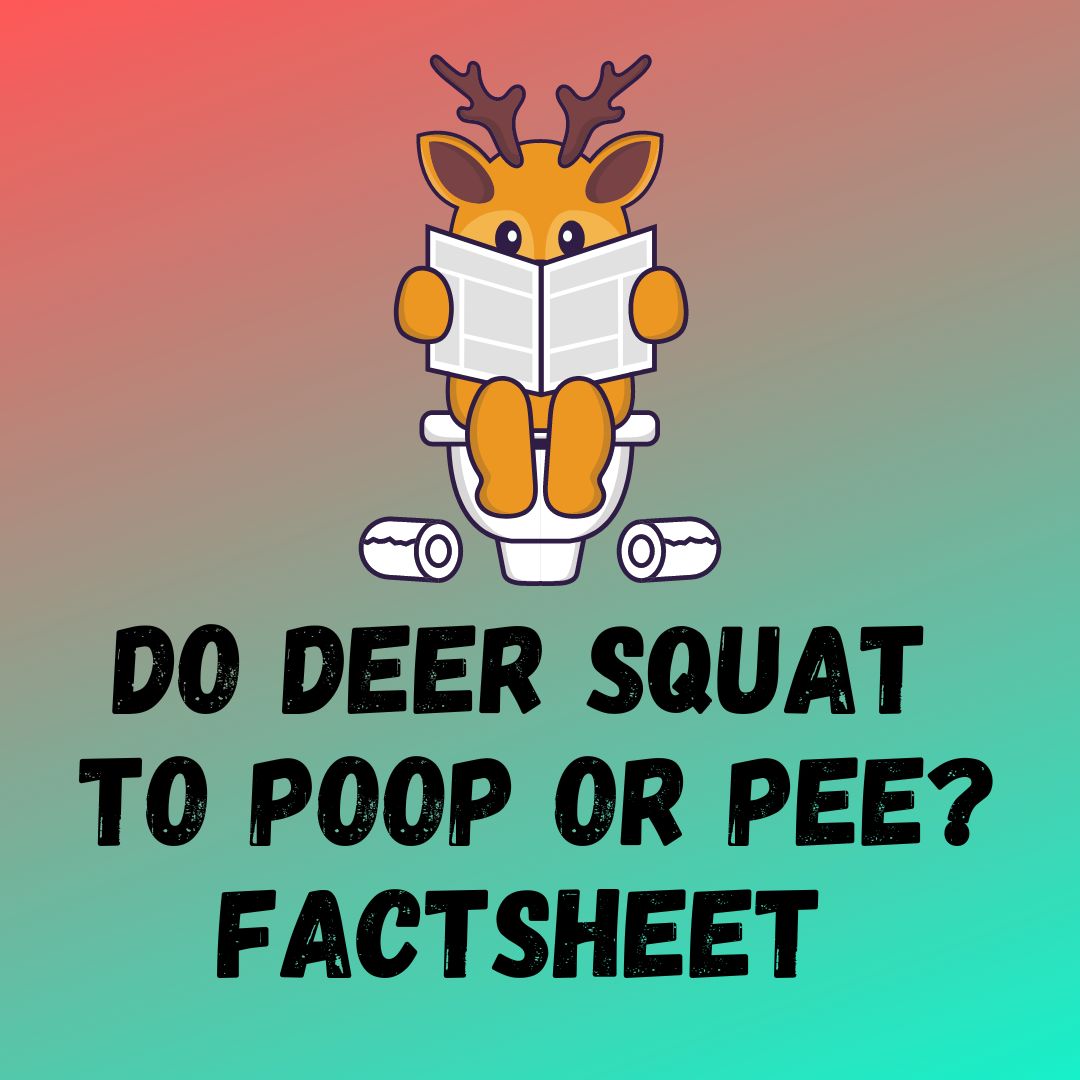Deer are graceful and majestic creatures that are found in many parts of the world. They are herbivores and have a unique digestive system that enables them to break down cellulose in plant material. However, one question that often comes to mind is how do deer poop or pee? Do they squat like dogs or cats, or do they have their own unique way of doing it? In this article, we will explore how deer poop or pee and put an end to this mystery once and for all.
Incident I came Across!
During my journey back home, I came across a deer on the roadside defecating. Although this may seem like an ordinary sight, it caught my attention as I observed the deer squatting low to the ground, similar to how a dog or cat would. I was curious to know whether this is a typical behavior among deer or if it’s a learned behavior. i did My research online and Finally concluded that Deer May Squat to poop or pee and its quiet normal behaviour..
Deer have a unique way of eliminating their waste that sets them apart from other animals. Unlike dogs or cats, deer do not usually squat to poop or pee. Instead, they do it while standing up, which is known as “yarding.” This means that they do not need to stop what they are doing to eliminate their waste, which is a great advantage in the wild. The urine and feces are released together, and deer use their powerful muscles to direct the stream away from their bodies.
Another interesting fact about deer is that they often choose the same spot to eliminate their waste, known as a “latrine.” This behavior is not only a means of eliminating waste, but it also serves as a way of marking their territory and communicating with other deer.
On the Contrary to “yarding” there are Some Special Situations like Mating Seasons, Female pregnancy, Poop Piles/middens, or Physical Injuries may trigger this behavior in doe and Deer.

Post Contents
3 Main Reasons Why Deer Squat
- The presence of poop piles, or middens, in areas where deer are known to congregate is one of the primary indications of deer eliminating waste in a squatting position.
- Pregnant Female Deer: A doe in heat or very near to it will squat to dump or pee. In an effort to attract male deer, they will stoop to pee on the ground and gland region, lick the gland area, and lick branches.
- Mating Season: Deer will rub-urinate during the mating season, which involves squatting while peeing so that urine will flow down the insides of the deer’s legs.
Yarding-up with respect to whitetail deer
Yarding-up is a behavior exhibited by deer during the winter months when they gather in small groups to conserve energy, find food, and increase their chances of survival. During this time, deer may exhibit changes in their pooping behavior as they adapt to the conditions.
One change that may occur is that deer may produce larger quantities of waste than they do during other times of the year. This is because they are eating more to maintain their energy levels, and the increased intake of food leads to increased waste production.
Another change that may occur is that deer may use specific areas within their yarding-up locations to eliminate waste, also known as “middens.” These middens can accumulate over time and may be found in areas where deer have been congregating for prolonged periods. While it may be unsightly, middens can also provide valuable nutrients to the soil and support the growth of plants.
It’s also worth noting that deer are less likely to move away from their yarding-up locations to eliminate waste during the winter months. This is because moving through deep snow is energetically expensive and can put them at greater risk of predation.

Deer Poop Facts, Textures and More
What Does Deer Poop Looks Like? Deer poop, also known as deer droppings or scat, is a common sight in areas where deer are present. Here are some interesting facts about deer poop:
- Size and shape: Deer poop is generally small, oval-shaped, and about the size of a peanut or raisin. The exact size and shape can vary depending on the age and sex of the deer, as well as its diet and hydration level.
- Texture and color: Deer poop is usually firm and cylindrical in shape, with a rough texture. The color can range from dark brown to black, depending on the deer’s diet and how long the poop has been sitting out in the elements.
- Clumping behavior: Deer poop is known to clump together in groups, called middens, which can range in size from a few pellets to several feet in diameter. These middens can serve as markers for deer trails and feeding areas.
- Nutrient-rich: Deer poop is high in nitrogen and other nutrients, making it a valuable fertilizer for plants and soil. However, it can also attract flies and other insects if not handled properly.
- A sign of deer activity: Finding deer poop in your yard or garden is a sign that deer are present in the area. You can use this information to take steps to deter deer from damaging your plants or to adjust your gardening plans accordingly.
In summary, deer poop is small, oval-shaped, and firm, with a rough texture and color that can vary depending on the deer’s diet and hydration level. It is high in nutrients and can be a valuable fertilizer, but it can also attract insects and serve as a marker for deer activity.
What to Do With Deer Poop In Yard and Garden Areas
Deer poop, like any other animal waste, can be a nuisance in yards and garden areas. However, it can also be beneficial as it contains nutrients that can fertilize soil. Here are some options for dealing with deer poop in your yard and garden areas:
- Leave it be: If the deer poop is in a low-traffic area and doesn’t bother you, you can leave it on the ground as a natural fertilizer. Over time, it will break down and add nutrients to the soil.
- Compost it: You can add deer poop to your compost pile, but it’s important to make sure it reaches a high temperature of at least 140°F (60°C) to kill any potential pathogens.
- Bury it: If you don’t want the deer poop to be visible, you can bury it in the soil. Make sure to dig a hole at least 8-12 inches deep to prevent other animals from digging it up.
- Remove it: If the deer poop is in a high-traffic area or near a vegetable garden, you may want to remove it. Wear gloves and use a shovel to scoop it up and dispose of it in a trash can.
What does it mean when a deer squats?
When a deer squats, it usually means that it is defecating or urinating. Deer typically assume a squatting position to eliminate waste, just like many other animals.
How many times does a deer poop in a day?
The number of times a deer poops in a day can vary depending on several factors, such as the deer’s diet, age, and health status. On average, a deer can defecate up to 15 times a day, but this number can be higher or lower depending on the circumstances.
Why do deer rub their back legs together?
When deer rub their back legs together, it is typically a sign of territorial marking or communication with other deer. Deer have scent glands on their legs that they use to leave scent marks on trees and other objects. By rubbing their legs together, they can spread their scent and signal their presence to other deer.
Can deer have solid poop?
Yes, deer can have solid poop. The consistency of deer poop can vary depending on their diet, hydration level, and other factors. In general, deer poop is firm and cylindrical in shape, but it can be softer or harder depending on the circumstances.
Conclusion:
In summary, deer do not squat to poop or pee. Instead, they eliminate their waste while standing up, which is known as “yarding.” This unique behavior is an adaptation that allows them to eliminate waste without interrupting their daily activities, and it also serves as a way of marking their territory and communicating with other deer.
Deer typically defecate in yards (Yarding), however under some unique circumstances, such as mating seasons, pregnancy, faeces piles or middens, or physical injuries, does and deer may exhibit this behaviour.
There are several options for dealing with deer poop in your yard and garden areas. You can leave it as a natural fertilizer, compost it, bury it, or remove it if necessary.

94% of pet owners say their animal pal makes them smile more than once a day. In 2007, I realized that I was made for saving Animals. My father is a Vet, and I think every pet deserves one. I started this blog, “InPetCare”, in 2019 with my father to enlighten a wider audience.
